The Note 10S is the latest offering in Xiaomi’s more affordable Redmi line of smartphones. Falling within our Advanced price segmentation of devices costing between $200 to $399, it comes with some attractive specs for the budget-conscious consumer.
The display is a 6.43-inch AMOLED with 2400 x 1080 resolution and MediaTek’s Helio G95 chipset provides the processing. The Redmi Note 10S comes with either 6 or 8 GB of RAM, and 64 or 128 GB of storage, and there’s a high-capacity 5000 mAh battery with fast 33W charging.
Billed as the “64 MP adventurer,” the Redmi Note 10S houses four camera modules, which is impressive at this price point. Its main 64 MP wide camera is complemented by an ultra-wide module with an 118° field of view, as well as dedicated macro and depth sensors. There’s no tele lens for long-range zoom enthusiasts. 4K 30 fps is the top-end video option, as well as 60 fps capture when you drop the resolution to 1080p.
Sounds good on paper. Let’s see how it gets on in our DXOMARK Camera tests.
Key camera specifications:
- Primary: 64 MP 1/1.97-inch sensor with 0.7µm pixel size, f/1.79-aperture lens
- Ultra-wide: 8 MP sensor, 118° field of view, f/2.2-aperture lens
- Macro: 2 MP sensor, f/2.4-aperture lens
- Depth: 2 MP sensor, f/2.4-aperture lens
- Video: 2160p (4K) at 30 fps, 1080p at 30/60 fps, (1080p/30 fps tested)
About DXOMARK Camera tests: For scoring and analysis in our smartphone camera reviews, DXOMARK engineers capture and evaluate over 3000 test images and more than 2.5 hours of video both in controlled lab environments and in natural indoor and outdoor scenes, using the camera’s default settings. This article is designed to highlight the most important results of our testing. For more information about the DXOMARK Camera test protocol, click here. More details on how we score smartphone cameras are available here.
Test summary
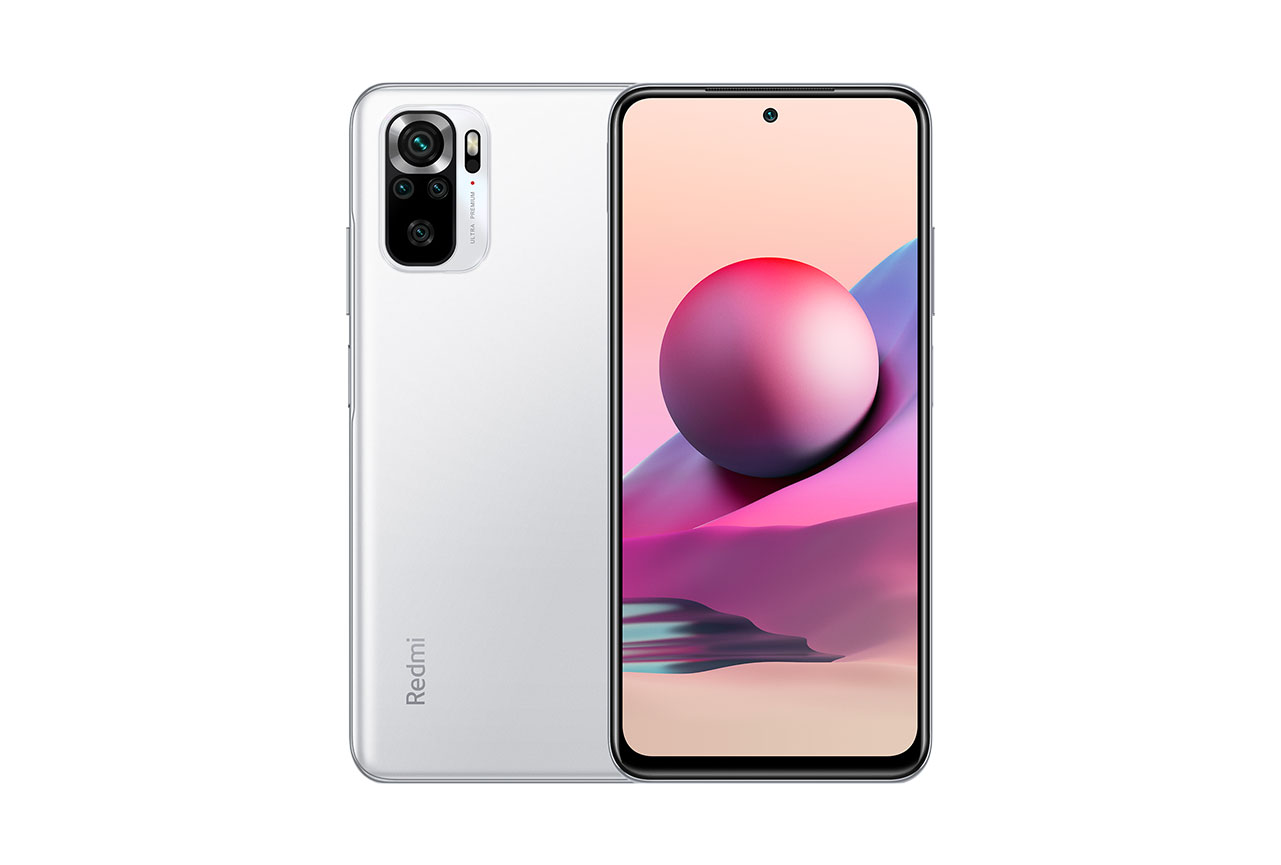
Xiaomi Redmi Note 10S


Pros
- Accurate target exposure in outdoor and indoor photos
- Vivid color and neutral white balance in outdoor photos
- Extended depth of field in photos
- Effective stabilization in most videos
- Low noise in outdoor videos
- Fast and accurate autofocus tracking in outdoor videos
Cons
- Low detail and unnatural texture in many photos
- Strong color casts in indoor and low-light photos
- Limited dynamic range in photos
- Frequent photo autofocus failures
- Low detail in all zoom photos
- Dull color and low detail in ultra-wide photos
- Strong exposure instabilities in many videos
- Coarse noise in indoor and low-light videos
- Slightly undersaturated video color
With an overall score of 92, the Xiaomi Redmi Note 10S puts in a somewhat underwhelming performance in our DXOMARK Camera tests. Positioned towards the bottom of our Advanced ranking, Xiaomi’s latest Redmi device is 19 points adrift of the Google Pixel 4a and Xiaomi Mi 11 Lite 5G, both at 111 points.
The Note 10S’s main strengths are generally accurate photo target exposure, as well as vivid color with neutral white balance in outdoor shots, and extended depth of field. Shooting video, stabilization is effective in most scenarios. Video autofocus can be a little slow to trigger initially, but once locked on, the Note 10S’s tracking is efficient, with fast and accurate convergence.
Unfortunately, photos often show low detail with unnatural texture, along with strong color casts both in indoor and low-light stills. Dynamic range is also fairly limited in standard photos, and without a tele lens, the Redmi’s longer focal length zoom shots all lack good detail. Ultra-wide shots also display low detail and fairly dull color.
Strong exposure instabilities and slightly undersaturated color are also visible in most videos. Some heavy ringing, often making subjects appear with a halo, is also apparent. Finally, coarse noise in indoor and low light also had a negative impact on the device’s overall Video score.
Below you can find a detailed analysis and image samples for all Photo, Zoom, and Video sub-attributes, as well as comparisons with two of the Xiaomi Redmi Note 10S’s competitors, the Google Pixel 4a and the Xiaomi Mi 11.
Photo
Xiaomi Redmi Note 10S achieves a Photo score of 98. In this section we take a closer look at each sub-attribute and compare image quality against competitors.

Exposure and Contrast
Xiaomi Redmi Note 10S
73
111
In these tests we analyze target exposure, contrast, and dynamic range, along with repeatability across a series of images. Tests are undertaken in a wide range of light conditions, including backlit scenes and low light down to 1 lux. The score is derived from a number of objective measurements in the lab and perceptual analysis of real-life images.
These samples show Xiaomi Redmi Note 10S’s exposure performance in an outdoor scene. The Redmi Note 10S offers the best target exposure on the subject’s face, but with slightly less dynamic range.

Color
Xiaomi Redmi Note 10S
80
107
In these tests we analyze color rendering, skin tones, white balance, and color shading, along with repeatability across a series of images. The score is derived from a number of objective measurements in the lab and perceptual analysis of real-life images.
These samples show Xiaomi Redmi Note 10S’s color performance in an indoor setting. While white balance is neutral in outdoor images, you can see a strong yellow or warm color cast is evident indoors.

Autofocus
Xiaomi Redmi Note 10S
85
109
In these tests we analyze autofocus accuracy and shooting time as well as repeatability, in the lab. We test focus failures, depth of field, and tracking of moving subjects using perceptual analysis of real-life images.
These samples show Xiaomi Redmi Note 10S’s depth of field in a multi-person portrait. Depth of field is wide, but autofocus failure sometimes occurs.


Texture
Xiaomi Redmi Note 10S
78
111
In these tests we analyze texture on faces and objects, including objects in motion, in a range of light conditions, using several lab test setups and perceptual analysis of real-life images.
These samples show Xiaomi Redmi Note 10S’s texture performance outdoors.

Noise
Xiaomi Redmi Note 10S
75
102
In these tests we analyze noise on faces and objects, including objects in motion, in a range of light conditions, using several lab test setups and perceptual analysis of real-life images.
These samples show the Xiaomi Redmi Note 10S’s noise performance in an indoor setting.

Bokeh
Xiaomi Redmi Note 10S
40
80
For these tests we switch to the camera’s bokeh or portrait mode and analyze depth estimation, bokeh shape, blur gradient, and repeatability, as well as all other general image quality attributes mentioned above. The score is derived from perceptual analysis of real-life images.
These samples show Xiaomi Redmi Note 10S’s bokeh simulation outdoors.

Night
Xiaomi Redmi Note 10S
20
82
In these tests we shoot a selection of images in pitch-black darkness as well as with city lights in the background providing some illumination. We shoot sample images with the camera at default settings in both flash-auto and flash-off modes. We analyze all image quality attributes but we pay particular attention to exposure, autofocus, and color. We do not test night modes that have to be activated manually.
These samples show Xiaomi Redmi Note 10S’s night performance in auto-flash mode.

Artifacts
Xiaomi Redmi Note 10S
60
77
In these tests, we check images for optical artifacts such as vignetting, flare, lens softness in the corners, distortion, and chromatic aberrations, as well as for processing artifacts such as ghosting and fusion errors, hue shift, and ringing.
This sample shows fusion artifacts in a high-contrast image. Other artifacts, including ringing, aliasing, and hue shift are also often visible.

Preview
Xiaomi Redmi Note 10S
44
80
In these tests we analyze the image quality of the preview image and the differences between preview images and captured images, particularly in terms of exposure, dynamic range, and bokeh effect. We also check the smoothness of the field-of-view changes in the preview image when zooming with both buttons or when using the pinch-zoom gesture.
These samples compare accuracy between the Xiaomi Redmi Note 10S’s preview and final capture. In photo mode the final exposure is consistent with the preview image. In portrait mode, however, there are noticeable differences between blur intensity and depth estimation.
Zoom
Xiaomi Redmi Note 10S achieves a Zoom score of 36. The Zoom score includes the tele and wide sub-scores. In this section, we take a closer look at how these sub-scores were achieved and compare zoom image quality against the competitors.

Wide
Xiaomi Redmi Note 10S
30
58
In these tests we analyze the performance of the ultra-wide camera at several focal lengths from 12 to 20 mm. We look at all image quality attributes, but we pay particular attention to such artifacts as chromatic aberrations, lens softness, and distortion.
These samples show the performance of the Xiaomi Redmi Note 10S’s ultra-wide camera in outdoor conditions.

Tele
Xiaomi Redmi Note 10S
40
140
In these tests we analyze all image quality attributes at focal lengths from approximately 40 to 300 mm, paying particular attention to texture and detail. The score is derived from a number of objective measurements in the lab and perceptual analysis of real-life images.
These samples show Xiaomi Redmi Note 10S’s tele performance using a close-range zoom setting in a low-light scene.
Video
In our Video tests we analyze the same image quality attributes as for still images, such as exposure, color, texture, and noise, but we also include such temporal aspects as speed, smoothness and stability of exposure, white balance, and autofocus transitions.
NOTE: The sample video clips in this section are best viewed at the highest resolution available.
Xiaomi Redmi Note 10S achieves a Video score of 82. A device’s overall Video score is derived from its performance and results across a range of attributes in the same way as the Photo score. In this section, we take a closer look at these sub-scores and compare video image quality against competitors.

Exposure and Contrast
Xiaomi Redmi Note 10S
60
118
These video stills show the Xiaomi Redmi Note 10S’s video exposure performance indoors.

Color
Xiaomi Redmi Note 10S
77
107
These video stills show the Xiaomi Redmi Note 10S’s video color under indoor lighting conditions.

Autofocus
Xiaomi Redmi Note 10S
78
109
These sample clips show the Xiaomi Redmi Note 10S’s video autofocus tracking performance in low light conditions.

Texture
Xiaomi Redmi Note 10S
41
99
This graph shows the Xiaomi Redmi Note 10S’s video texture measurements in the lab.

Noise
Xiaomi Redmi Note 10S
75
105
This graph shows the Xiaomi Redmi Note 10S’s video noise performance under different lighting conditions in the lab.

Artifacts
Xiaomi Redmi Note 10S
70
85
For video artifacts, we check for the same kinds of artifacts mentioned in the Photo section, along with such video-specific artifacts as frame rate variation in different light conditions, judder effect, and moving artifacts (artifacts such as aliasing, color quantization, and flare can often be more intrusive when moving than in a still image).
This graph shows the Xiaomi Redmi Note 10S’s ringing profile when shooting video.

Stabilization
Xiaomi Redmi Note 10S
99
103
In these tests we analyze residual motion when handholding the camera during recording, as well as when walking and running with the camera. We also look for stabilization artifacts such as jello effect, sharpness differences between frames, and frame shift (abrupt changes of framing).
These sample clips shows Xiaomi Redmi Note 10S’s video stabilization performance under indoor lighting conditions.


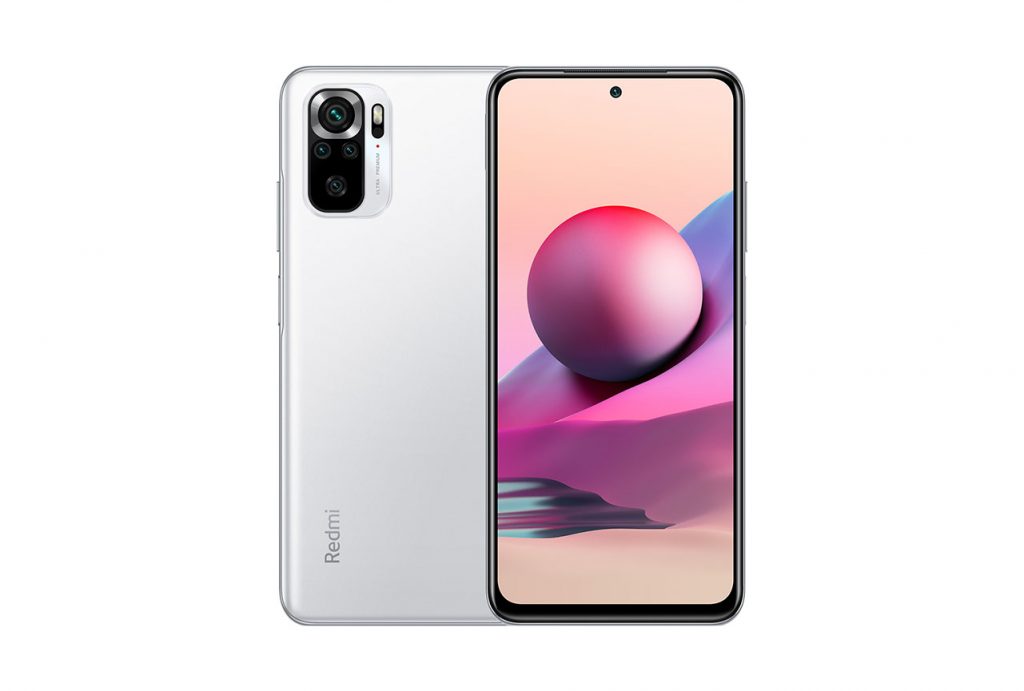









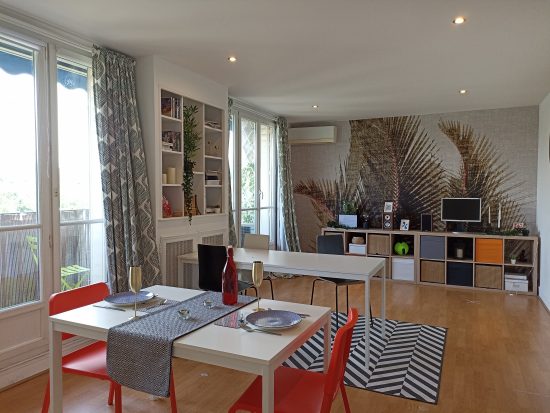
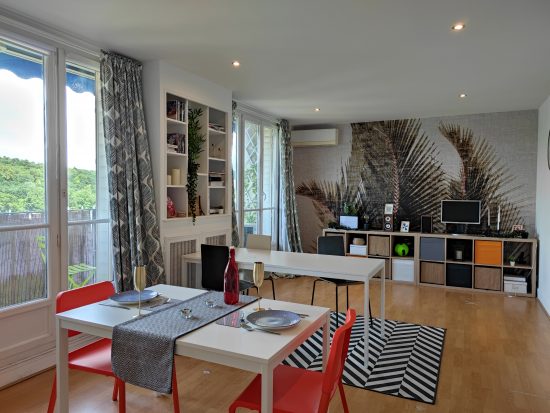




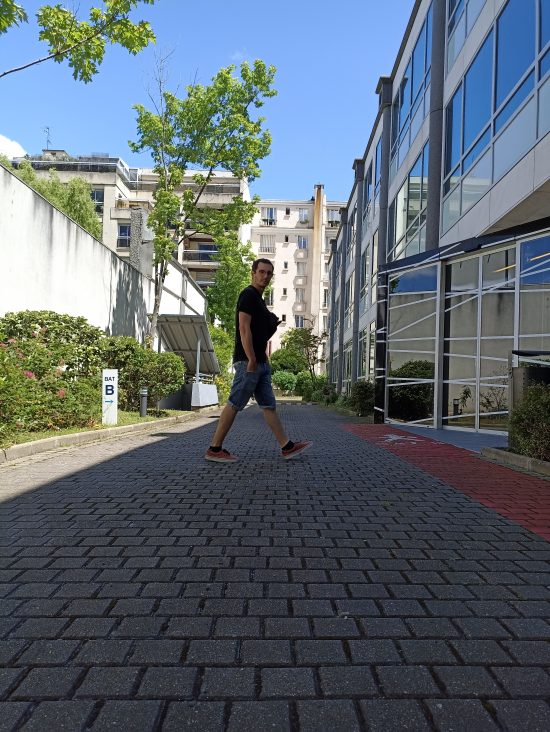
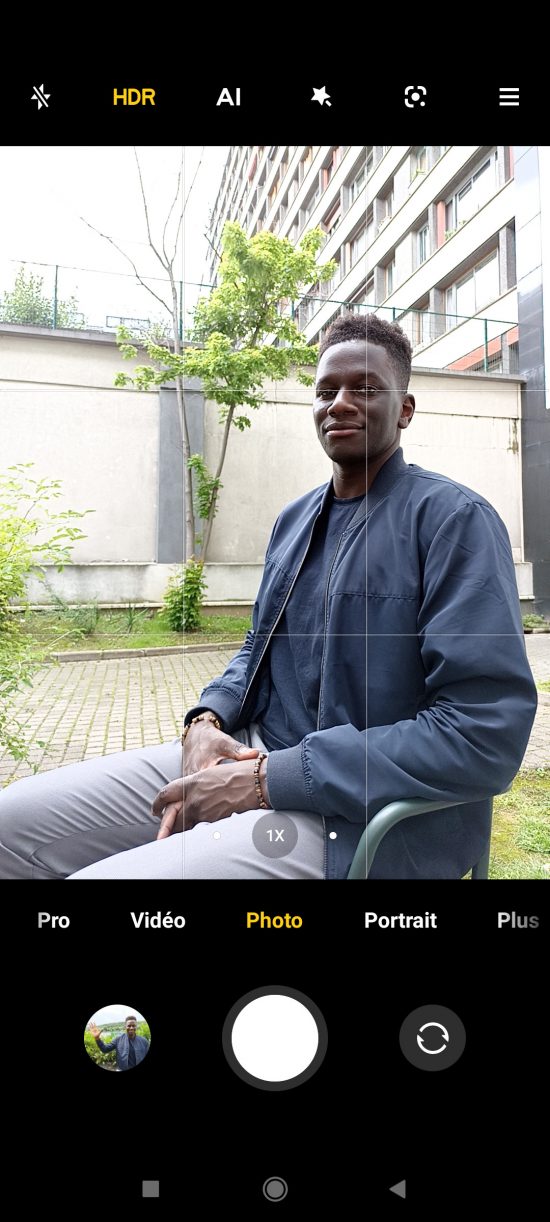


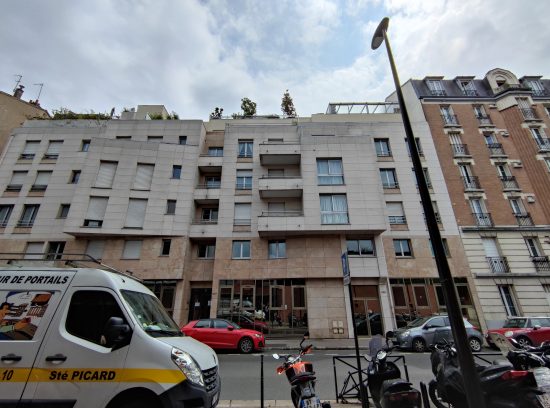




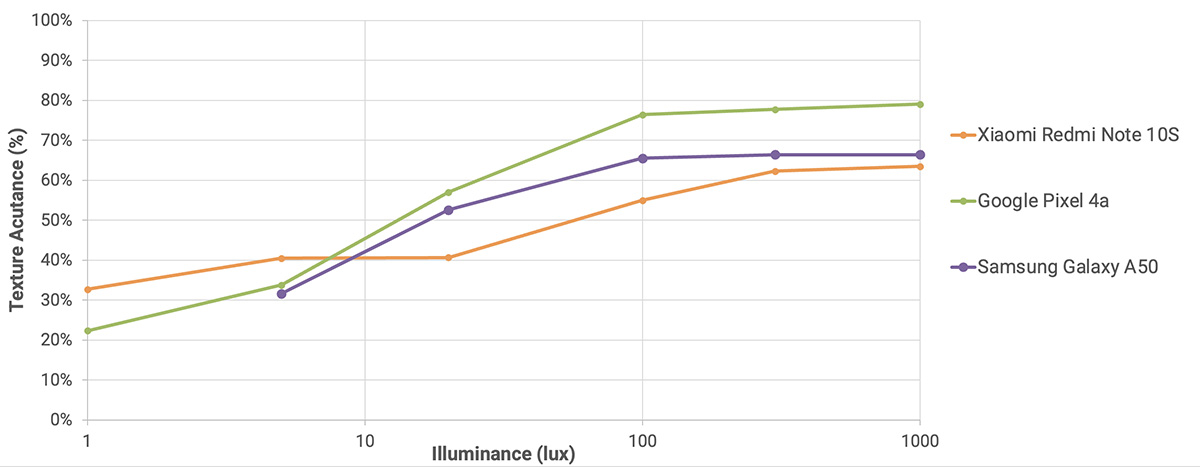
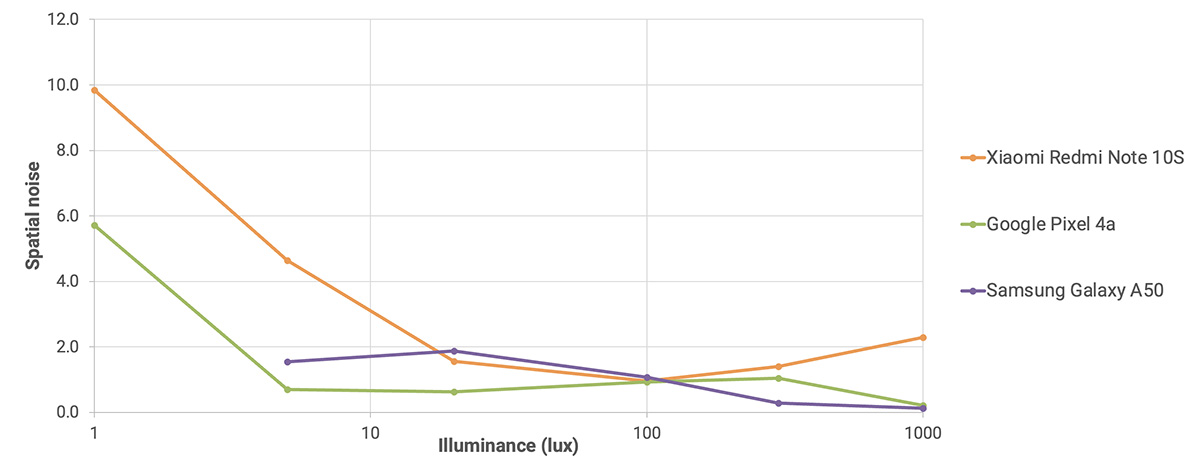
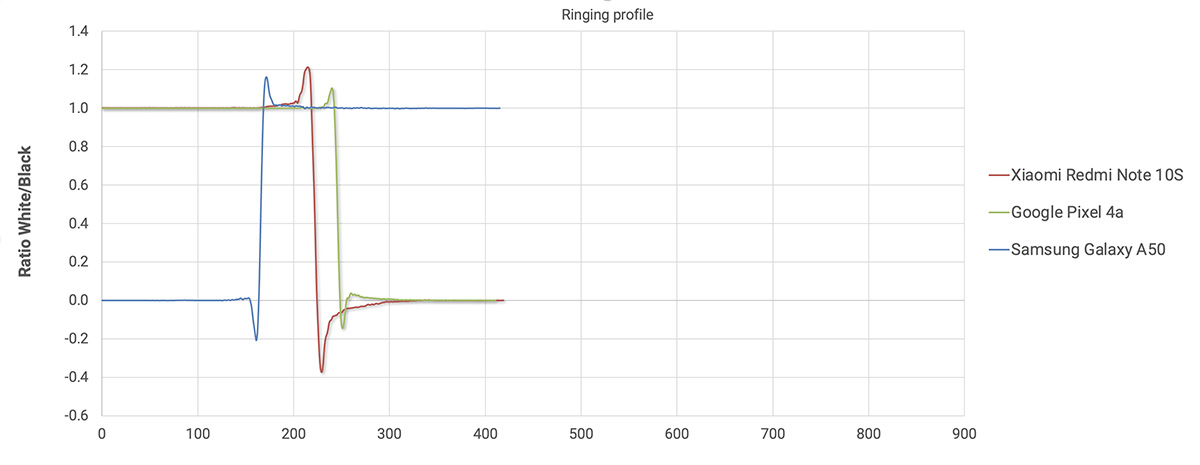
DXOMARK encourages its readers to share comments on the articles. To read or post comments, Disqus cookies are required. Change your Cookies Preferences and read more about our Comment Policy.